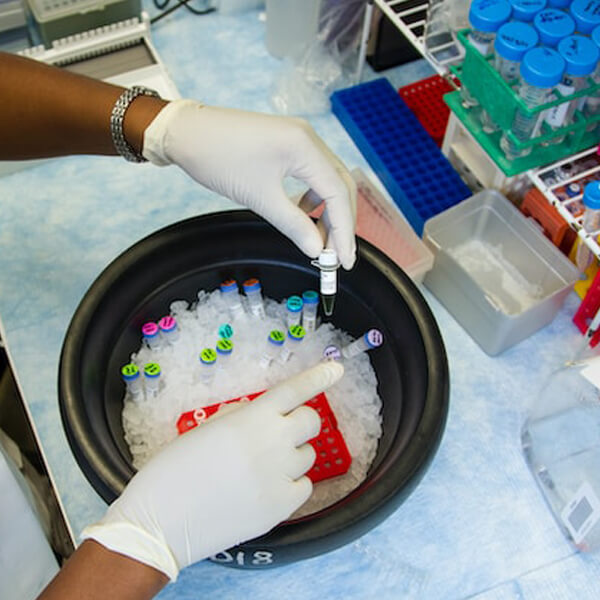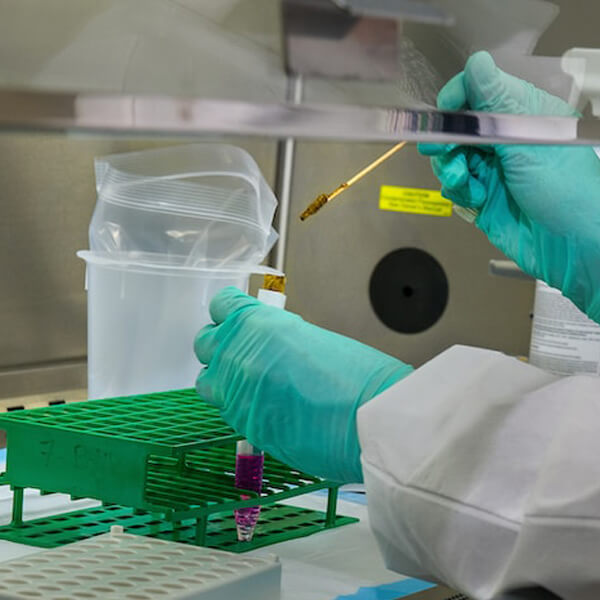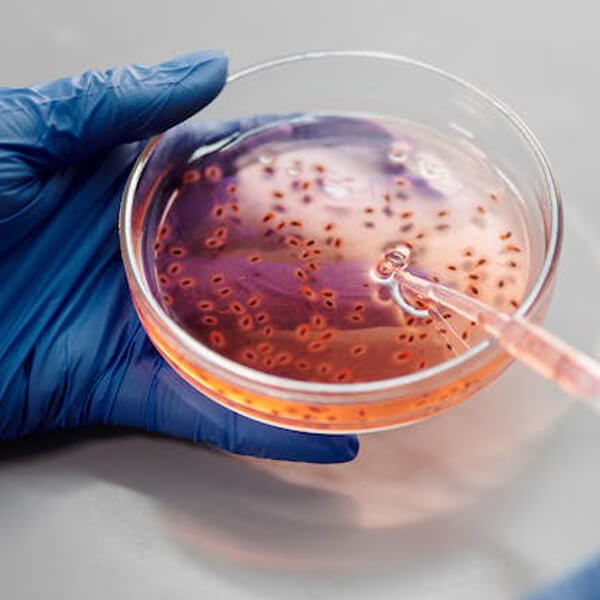Air Quality Monitoring & Assessment
Air Quality Testing
We are expert at providing real time measurement of carbon monoxide, sulphur dioxide, ozone and oxides of nitrogen at parts per billion levels.
Our instruments have a self-logging facility to record concentrations of the pollutants over a pre-set averaging time, together with several ‘diagnostic’ parameters. Monitoring for PM10 fine particulates is also possible, using real-time or pumped filter systems, together with volatile organic compounds (including benzene).
As well as short term monitoring, our instruments can be used to monitor air quality over longer periods to take into account fluctuations in meteorological conditions.
Expert Interpretation
Data recorded by the instrumentation is downloaded and interpreted against current standards, legislation and guidance by Lab Works EA’s environmental scientists. Fully comprehensive reports are issued, together with weather data from the Meteorological Office over the monitoring period.
Typical Applications Include
To assess air quality for local authorities in accordance with the Kenya’s Air Quality Regulation
To measure air quality around an industrial site as a requirement of a ISO 14001 Environmental Management System or IPPC Permit
For assisting land developers with planning applications and environmental impact assessments
The effects of air pollution on health have been recognised for over three centuries. Current national legislation is now focusing on maintaining or improving local air quality to protect public health. NEMA’s air quality regulation has set targets or limit values for individual pollutants, with action plans drawn up for those areas where there is a risk that standards are or might be exceeded.
Tailored air quality testing for global customers Lab Works EA are the partner of choice to many organizations across governments and the environmental consulting sector. Specializing in the delivery of accurate and independent air quality testing and analysis, we create strategies that are tailored to your individual requirements. Our air quality monitoring stations are equipped with the latest real-time USEPA approved monitoring instrumentation and we apply recognised best practice throughout the testing process.
Our capabilities cover the full spectrum of air quality testing, including NO NO2, SO2, CO, O3, Non-Methane/Methane Hydrocarbons, and BTEX utilising both continuous and non-continuous methods.
We also have stack sampling and emission testing teams who specialize in CEMS/PEMS RATA testing as well as routine process compliance work using US EPA promulgated methods.
We work closely to ensure you understand our findings and will discuss any implications for your organisation. Our advanced software allows us to present data in ways tailored to your specific needs. It is this comprehensive technical capability coupled with our understanding of national and local regulations that elevates Lab Works EA to partner of choice for air quality testing.
Lab Works EA ‘s Ambient Air Quality Testing Includes:
Baseline air quality testing for EIAs
Process industry boundary monitoring programmes
Meteorological studies
Statistical/directional analysis capabilities
Cost effective techniques are also available in real time for shorter studies or snap shot assessment
Stack sampling and emission monitoring
Basic diffusion tube services and wet chemistry testing
Stack Sampling
Stack Sampling To Meet Your Needs
If your facility or processes are regulated by national or regional regulations, then you will be required to comply with the details of your licence.
Lab Works EA’s stack sampling and emissions monitoring expertise provides world-leading support for your business. Our programmes can be tailored to your specific needs and overseen by field teams backed by chemists and technicians based in specialist stack sampling facilities.
With our comprehensive and state of the art range of testing equipment, we ensure stack sampling programmes based on internationally recognised protocols.
All stack sampling and emissions monitoring programmes include modified methods for special applications. Stack sampling and process emission monitoring services include:
Emission monitoring for compliance
Gas turbine commissioning and performance testing
Process optimisation testing
CEMS and PEMS verification studies by US EPA RATA protocols
Full US EPA compliant testing capabilities for:
Combustion gases (NO, NO2, SO2, O2, CO2, CO, UHC)
TOC/VOC by online FID
Particulate matter
Halides
Multi phase and trace elements
Dioxins, PAHs and PCBs
Ambient air quality monitoring
Regulatory compliance dispersion modelling
We support customers in a range of industries, including: chemicals, metals, mining, waste, petroleum and printing.
Stack Sampling and Emission Monitoring
All of our stack sampling and emission monitoring methods and practices include extensive QA/QC procedures, suited to your most stringent requirements
Capacity to handle large quantities of samples and supply precise, accurate results
All analytical and on-site procedures are up-to-date and all equipment is calibrated accordingly
Stack Emissions Testing
If your facility or processes are regulated by national or regional regulations, then you will be required to comply with the details of your licence.
Lab Works EA stack sampling and emissions monitoring expertise provides world-leading support for your business. Our programmes can be tailored to your specific needs and overseen by field teams backed by chemists and technicians based in specialist stack sampling facilities.
With our comprehensive and state of the art range of testing equipment, we ensure stack sampling programmes based on internationally recognised protocols.
Our lab provides a clean environment for the preparation and recovery of samples from sites of your choice, without interfering with your routine business operations.
All stack sampling and emissions monitoring programmes include modified methods for special applications.
Stack sampling and process emission monitoring services include:
Emission monitoring for compliance
Gas turbine commissioning and performance testing
Process optimisation testing
CEMS and PEMS verification studies by US EPA RATA protocols
Full US EPA compliant testing capabilities for:
Combustion gases (NO, NO2, SO2, O2, CO2, CO, UHC)
TOC/VOC by online FID
Particulate matter
Halides
Multi phase and trace elements
Dioxins, PAHs and PCBs
Ambient air quality monitoring
Regulatory compliance dispersion modelling
We support customers in a range of industries, including: chemicals, metals, mining, waste, petroleum and printing.
Stack Sampling and Emission Monitoring
All of our stack sampling and emission monitoring methods and practices include extensive QA/QC procedures, suited to your most stringent requirements
Capacity to handle large quantities of samples and supply precise, accurate results
All analytical and on-site procedures are up-to-date and all equipment is calibrated accordingly
Compliance Monitoring
Covering all categories of compliance monitoring
Lab Works EA are able to provide emission compliance monitoring, sometimes called stack emissions testing in accordance with the NEMA air quality regulations 2014.
Using the latest USEPA approved instrumentation we are able to conduct the routine compliance monitoring, typically bi-annual or annual, accurately and efficiently, while providing on-site support and advice to clients using real time data. This approach allows Lab Works EA to offer a quality driven, customer focused, reliable service throughout Kenya and East Africa.
A portfolio for the private and public sectors
Lab Works EA offer a portfolio of emission monitoring services to the private and public sectors, with clients ranging from the fuel and power, chemicals, metals, Energy from Waste (EfW), incineration and landfill sectors, whilst extensive experience also exists with key public sector clients such as the County Governments and NEMA Kenya.
Meeting your needs
Lab Works EA has a team of certified Engineers in Kenya. We operate across the country, so we can respond quickly, and because we are a dedicated stack emissions testing contractor, you get the benefit of our undivided attention. However, this doesn’t mean our services cost you the Earth. With Lab Works EA, NEMA accredited stack emissions testing remains an affordable business.
We provide international clients with market-leading, professional and competitive stack emissions monitoring and testing services including:
Sector Specialisms
Lab Works EA’s sampling teams are hugely experienced & operate across many industries;
Energy from waste (EfW)
Incinerators
Power generation
Renewable energy
Cement & lime
Chemical & pharmaceutical
Metals processes
Gas turbines & boilers
Crematoria
Petrochemical
Landfill gas engines & flares
Wood and fibre board processes
Our Success is Based on Three Principals:
- Compliance
In all aspects of testing-safety, quality management, ISO 17025 requirements, we ensure that all testing and data is accurate, reliable, compliant with international standards and acceptable to national regulatory bodies. - Safety
Lab Works EA’s operates to the highest standards and adopts a safety first approach to monitoring. Working closely with clients, it ensures monitoring work is performed safely and in compliance with current legislation. - Performance
By providing excellent service and through continuous improvement, we exceed expectations in technical capability, speed of response, reporting times and project management.
Additional Services
The following can be tailored to clients’ requirements including:
Air & odour emissions/dispersion modelling using the latest software (both ADMS and AERMOD)
Instrument servicing, maintenance and calibration services, with factory trained engineers
Consultancy & training in EN 14181
Method development & implementation of ISO 17025 procedures for testing laboratories
Lab Works EA’s occupational hygienists are trained and experienced in all aspects of LEV (Local Exhaust Ventilation) assessments.
Exposure to hazardous substances in the workplace should either be prevented or adequately controlled.
The object of an LEV system is to control the emission of such substances to the atmosphere as close as possible to the point of source, thereby preventing release into the workplace. To be effective, LEV must initially be well designed and constructed. Over time, the performance of systems can deteriorate due to wear, blockage or damage. Thus, regular inspection and testing is critical to ensure that control of exposure remains adequate.
Legal Background
The DOSH and air regulations require employers to assess and control the exposure of their workforce to hazardous materials. DOSH and air regulations requires that where local extract exhaust ventilation plant is used to control exposure to substances hazardous to health, a thorough examination and test be undertaken at least once every 14 months to ensure that it remains in good working order, or more frequently in some specific cases.
HSE Guidelines
Local Exhaust Ventilations Systems should be examined and checked. The aim is to ensure that LEV systems which are intended to control substances hazardous to health, including biological agents, continue to operate as originally intended. In order to work a system should effectively capture released hazardous substances, remove them from the workplace and safely dispose of them. The health of people indoors and outside is then protected.
LEV Monitoring Techniques
Lab Works EA’s employ a number of techniques to check LEV systems. This will include flow checks using specialist anemometers, pitot tubes and smoke tests, pressure measurements and visual examinations. The ductwork in larger systems will need to be fitted with access points for the equipment. If these are not already in place, Lab Works EA’s staff can install them where it is possible to do so safely.
Exposure Monitoring of Staff
HSE guidance also suggests that staff who are protected by the LEV may also need monitoring to confirm the effectiveness of the system at controlling exposure to a substance hazardous to health. Lab Works EA’s Occupational Hygienists can monitor individual staff members and the general atmosphere for most hazardous materials.
Emissions to Atmosphere
For some processes there may be regulations requiring the monitoring of the final exhaust from the system into the environment. Lab Works EA’s has specialist accredited staff who can undertake this work and provide reports to provide reassurance to the enforcing authorities. Helping you meet COSHH regulations Local exhaust ventilation (LEV) systems are commonly used as an engineering control measure to capture and transport harmful substances released from a process at source, before entering the workplace atmosphere.
The DOSH Regulations 2007 places a duty on the operator to ensure that all control systems, including LEV, are tested by a competent person and inspected at least once every 12 months, or more frequently for some processes.
Under the DOSH Controlling airborne contaminants at work, it is the employer’s responsibility to know and understand the following:
The parts of an LEV system and their function.
How the LEV system should be used.
How to recognise a damaged part.
Simple checks that the LEV system is delivering its design performance and is effectively controlling emissions and exposure.
Exova can conduct a thorough and comprehensive examination of your LEV system to determine its effectiveness and evaluate the system in accordance with recommended criteria, i.e. capture velocities, duct velocities.
Telling You What You Need to Know
Employers need to be aware of the following:
The parts of an LEV system and their function.
The legal requirements for the thorough examination and testing of LEV systems.
How to recognise a damaged part from a visual inspection.
The purpose of, and how to use, the measuring and assessment instruments and techniques.
The most suitable instrument to test the performance of each part of the LEV system.
The standard to which each part of the LEV system should perform.
How to recognise when a part of the LEV is performing unsatisfactorily, based on the measurements taken and assessment methods used.
How to assess whether the LEV is effectively reducing airborne contaminant emission and operator exposure.
How to collate and record information in a clear, concise and useable way.
How to work safely with the LEV plant and the hazards associated with it.
The technical report produced will subjectively assess the control measure, and provide detailed comment and practical recommendations, where appropriate.
Environmental Health & Safety Measurements
Noise & Vibration
Occupational Hygiene Measurements
Food
Agriculture
Asbestos




